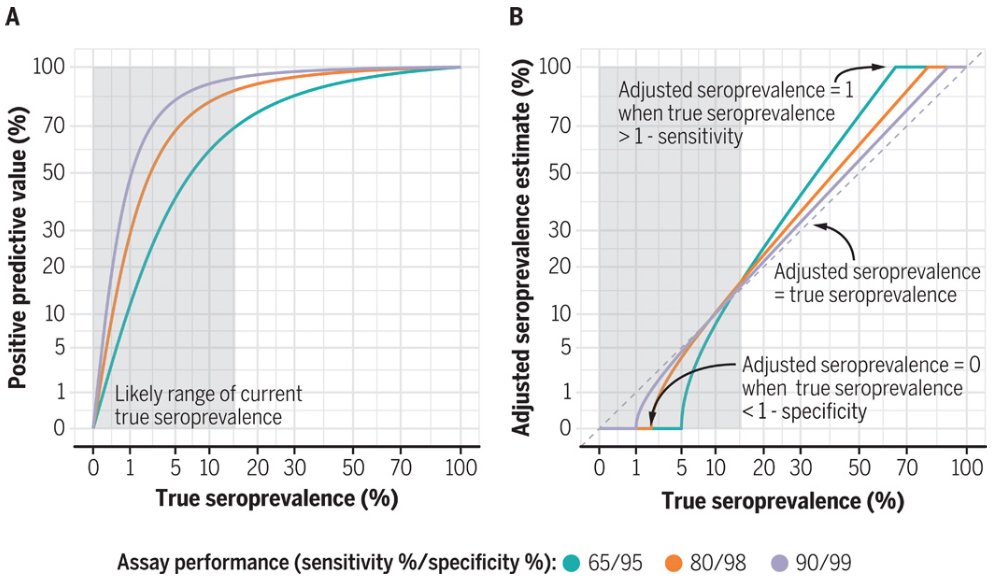Now out: Our article in @SciImmunology on uses for SARS-CoV-2 serology. @JulietBryantBr1 @andrewazman @TheFerrariLab @ben83638 @maciekboni @KylaHayford @michaelmina_lab @isabelrodbar @yapboum2.
https://immunology.sciencemag.org/content/5/47/eabc6347
Key">https://immunology.sciencemag.org/content/5... points:
https://immunology.sciencemag.org/content/5/47/eabc6347
Key">https://immunology.sciencemag.org/content/5... points:
We divide the use cases of SARS-CoV-2 serology into two: 1) Individual level, and 2) Population level.
At the individual level, it can be used to support clinical diagnosis in acute #COVID19 (supplement to PCR/nucleic acid detection), for baseline serostatus in vaccine studies, or to determine vaccination status.
However, regarding “immune passports”, even with excellent (but imperfect) specificity, substantial false-positive results can occur, especially in low-incidence settings (Fig 1A), and still unknown how well seropositivity translates into immunity.
At the population level, cross-sectional serosurveys can provide valuable information on age-specific or spatial distributions and fatality rates, measure the impact of interventions, and eventually, confirm absence of transmission.
Importantly, assays for population-level use cases do NOT have to have perfect, and we encourage the “tuning” of sens/spec for local prevalence and intended use (e.g. raising ELISA cutoff for low-prevalence settings to prioritize spec) - Fig 1B
To fully realize potential of population-level serosurveys, we describe several “Foundational” studies that must be addressed (Table 1), related to test performance, antibody dynamics, and correlates of protection.
For example, we must know the longterm kinetics of antibody responses (how long antibodies can be detected after exposure), to interpret serosurvey results. To do this, longitudinal follow-up of cohorts of infected patients are needed.
Another type of study is to determine correlates of protection/immunity by following high-risk individuals (e.g. household contacts) after known exposure, and comparing pre-existing antibody levels of those who go on to get infected with those who don& #39;t.
Finally, we call for coordination and governance of seroepidemiology programs to facilitate standardization of methods, dissemination of results, and ensure policy relevance. Such efforts would be beneficial beyond SARS-CoV-2.
This piece was an international effort, with investigators from many settings/continents providing unique perspectives. Writing led by @JulietBryantBr1, figures by @andrewazman. Many thanks to editor @IforRWilliams for giving us a platform to publish on.
Juliet Bryant @JulietEvelynBr1

 Read on Twitter
Read on Twitter




